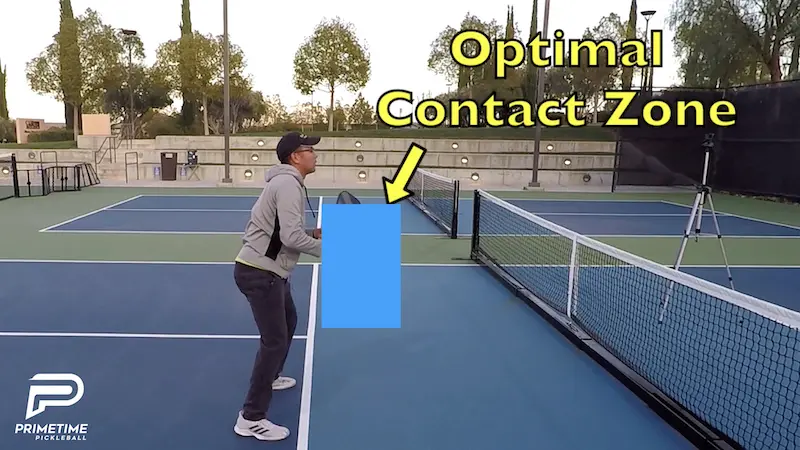In today’s blog we’re going to give you three tips so that you can have better dinks.
Tip #1 – Looser Grip Pressure Than You Might Think
The first tip is going to be grip pressure.
A lot of the time, when people start out, have a very tight grip, especially if they haven’t played a racket sport before.
If you grip it the tightest you can that would be a 10 on a scale from 1 to 10. If you grip it the lightest that would be a 1 on the scale.
You want to have a grip press of anywhere between 3 and 5. You don’t want to be too tight and you don’t want to be way too loose.
What this is going to do is that it’s going to allow you to feel the ball a little bit more. If you had let’s say a 9 or a 10 grip pressure it would be very tight, so it would be very hard to stay loose in your dink.
It’s also going to really push that ball off the paddle which might not be what you’re looking to do.
Whether you’re hitting a forehand or backhand dink, your grip pressure should always be between a 3 and a 5 which is fairly loose.
This way you can really feel the ball off your paddle and the looser grip will allow the paddle to absorb some pace off the ball which is very useful for soft shots such as dinks.
Tip #2 – Stable Paddle Face Throughout Stroke
Tip number two is that you want to have a stable paddle face during contact.
A lot of the time, when people start off in pickleball, they use a lot of wrist.
As they hit the ball their paddle face angle changes a lot and when you do that there’s a lot of variables that can happen. The direction that you want to hit the ball is going to change.
It’s important to keep stable paddle face where the angle of your paddle is the same as you hit the ball. As you hit a forehand or a backhand your paddle face should be stable as you go from low to high in your swing motion.
As you do this, make sure to keep a pretty light grip pressure.
Tip #3 – Optimal Contact Point (Not Too Close & Not Too Far)
The third tip has to do with the contact point. Especially where it is relative to your body.
You’ve probably heard this before, but, if you haven’t, this is one of the most important things when you’re dinking and also with any shot that you play in the game of pickleball.
You want to have a good space between where you hit the ball and your body.

You don’t want to be reaching way out in front of you to the point where you’re stretching out because that will probably cause some pop-ups.
On the other end, if you’re hitting it too close to your body, then that’s going to jam you up and you’re not going to be able to control that ball.
What you should do is work on moving either to the ball or away from the ball to get that same consistent contact point. The correct contact point should be about two to three feet in front of your body. This way you won’t be overextending and it’s also not too close to your body.
As you’re practicing you may have to to back up to create that contact point by taking a small step back or if the ball is short then you may need to move forward to create that ideal spacing.
Bonus Tip
A bonus tip we’re going to talk about really quickly pertains to the backswing and your follow-through. If your target while dinking is inside the kitchen, on the opposing side, then your target is not that far away.
In this situation, you don’t need to do a lot of work. You want to make sure that you’re not taking your paddle way back on your backswing.
Your paddle should generally start right next to you and then you should just push the ball up. Your follow-through is very short. It should be a compact stroke.
Whether you hit a forehand or a backhand it’s a short swing path.
We hope you enjoyed those three tips today. We’re sure these will help you out in your dinking game.